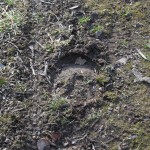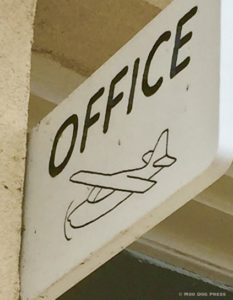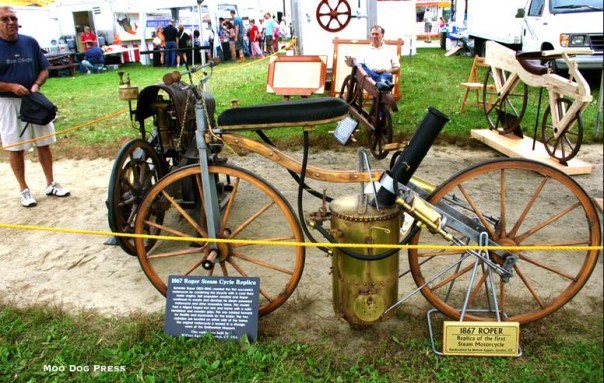Ingenuity, Summer Explorations, Oshkosh AirVenture. Saddle Up, Gettysburg.
“If a man has any greatness in him, it comes to light, not in one flamboyant hour, but in the ledger of his daily work.”
– Beryl Markham
Brainpower, ingenuity, know how. Engineers, problems solvers, mechanics. Some become entrepreneurs, as the creative process of figuring things out can be applied to life – desire, goal, how to get there. Aviation. Horses. Business. Whew. We're all deep into summer now.
Time for 2018 EAA AirVenture Oshkosh, ongoing to Sunday, July 29.
Aviation is a sometimes hidden economic factor of life for those who do not fly. But an airport of any size is a portal; smaller ones yield interesting sightings.
Some facts and figures from the 2017 show:
Attendance: Approximately 590,000, an increase of five percent over 2016.
Total aircraft: More than 10,000 aircraft arrived at Wittman Regional Airport in Oshkosh and other airports in east-central Wisconsin. At Wittman alone, there were 17,223 aircraft operations in the 10-day period from July 21-30, which is an average of approximately 123 takeoffs/landings per hour.
Total showplanes: 2,991 (up 5 percent over 2016): 1,107 homebuilt aircraft (second straight year over 1,100), 1,162 vintage airplanes (up 12 percent), 351 warbirds, 168 ultralights and light-sport aircraft, 79 seaplanes, 54 rotorcraft, 60 aerobatic aircraft, and 10 hot air balloons.
Camping: More than 11,600 sites in aircraft and drive-in camping accounted for an estimated 40,000 visitors throughout the week.
Commercial exhibitors: 881.
Forums and Workshops: A total of 1,050 sessions attended by more than 75,000 people.
Social Media, Internet and Mobile: More than 15.4 million people were reached by EAA’s social media channels during AirVenture (double the 2016 total); EAA AirVenture app had 1.7 million screen views; EAA video clips during the event were viewed 2.2 million times; and EAA’s 1,900 photo uploads were viewed more than 9.8 million times. Also, EAA web streams were accessed more than 500,000 times by viewers in 192 countries, who watched more than 110
The weathered wood wall seen here adorned with a glowing farm landscape painting, impromptu arrangement of flowers and vegetables, plus a coiled rope (my personal favorite) was seen at an open house art exhibit inside an old barn. Not the usual cup of tea to be sure, but worth a visit. Hey, you just never know what hidden treasure awaits inside seemingly mundane sites. But it calls for a bit of initiative to go – open that door or head down a rutted dirt road. Remember, there are surprises to discover even in your own backyard.
The CT Antique Machinery Association (CAMA) Antique Engine Show, Saturday, July 28, 10 a.m. to 4 p.m., in Kent, Conn. Free admission. Food vendors on site. CAMA is located directly adjacent and to the north of the Sloane-Stanley Museum; the driveway is shared by both sites.
Eric Sloane Museum & Kent Iron Furnace, on the National Register of Historic Places and a Connecticut State Archaeological Preserve:
“A man of great energy and many talents, Eric Sloane (1905-1985) was a prolific artist, author and illustrator of more than 30 books, and an avid collector of Americana. His extensive collection of hand tools is displayed in a building gifted to the state in 1969 by Stanley Works, the Connecticut-based tool manufacturing company, to mark their 125th anniversary.
“Sloane's career as an artist comes vividly alive in his studio, minutely re-created with his paint-spattered easel and rows of jars jammed with paint brushes. Examples of his artworks are displayed in an adjoining gallery. Adjacent to the museum, is a cabin built (and recently re-built) as described by Noah Blake in Diary of An Early American Boy, an 1805 diary published by Sloane.
“The Kent Iron Furnace, which is on the museum property, began production of pig iron in 1826 and continued for almost 70 years. The remains of the granite blast furnace with its Gothic arches can be seen just below the museum.” Admission charged for museum; the grounds are open to the public, free.

The CAMA blacksmith shop – linked to the official site which features stories, photo galleries, more details.
Now for a real-life report from the saddle.
Having lived in Virginia, Maryland, Florida, paired with an avid interest in history, the idea to ride the Gettysburg National Military Park on horseback is now a reality with more than a few options.
The Gettysburg National Riding Stables offers rides rain or shine (extreme weather, of course, cancels). Some details from the official page. Riders must be age 7 or older as riders are required to ride their own horse. (No double riding.) Riders age 15 and under must be accompanied by an adult (age 18 or over). Riders age 16 or 17 may ride alone with an adult’s signature of approval on their waivers. All riders must weigh less than 210 pounds and be in reasonably good health with the ability to get on a horse required.
Helmets are required for all riders age 8 to 17. Riders age 18 and older may decline a helmet when signing a waiver. Close-toed shoes are required; open-toed shoes and sandals are prohibited. Long pants are recommended for rider comfort, but are not required.
Tours are from one to four hours. Licensed Battlefield Guide is on all historical tours.
Wrangler-led scenic (non-historic) trail rides are also available, or may be scheduled, for those wanting to simply take in the scenery without obtaining the history.

Should you want to see why the Trostle Farm is of interest, here is a site that illustrates what it looked like after the battle at Gettysburg. Don't miss the shell hole still visible in the brick wall of the Trostle barn.
Now there are multiple listings for other horseback tours with guides, even carriage rides from which to choose, according to your own requirements. Visitors can opt for seeing the battlefield by bicycle, as well as by car – with or without frequent stops. As Gettysburg National Military Park sprawls across more than 6,000 acres of preserved battleground with 26 miles of road, there is much to see. It is a visit you will long remember.
To request a Gettysburg Visitor Guide or for other area information, call (800) 337-5015. The Civil War Trust (CWT) offers 10 facts about the battle, linked here. CWT offers battlefield guide apps designed to work on iPhone, iPad, iPad mini, iPod touch and most Android-powered smartphones. Consult their web site for more tips as well as lesser-known destinations to visit. News about their ongoing efforts to preserve places that may be lost to development can be found there as well.
The National Park Service offers a page linked here about some of the wildlife to be found at Gettysburg National Military Park.





